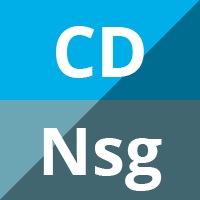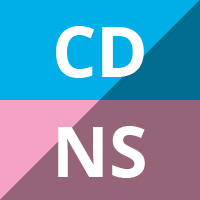
Iron chelators for acute stroke
Abstract Background Stroke is the second leading cause of death and a major cause of morbidity worldwide. Retrospective clinical and animal studies have demonstrated neuroprotective effects of iron chelators in people with haemorrhagic or ischaemic stroke. This is the first update of the original Cochrane Review published in 2012. Objectives To evaluate the effectiveness and safety of iron‐chelating drugs […]

Interventions for treating brain arteriovenous malformations in adults
Abstract Background Brain arteriovenous malformations (AVMs) are the single most common cause of intracerebral haemorrhage in young adults. Brain AVMs also cause seizure(s) and focal neurological deficits (in the absence of haemorrhage, migraine or an epileptic seizure); approximately one‐fifth are incidental discoveries. Various interventions are used in an attempt to eradicate brain AVMs: neurosurgical excision, […]

Antibiotic therapy for preventing infections in patients with acute stroke
Abstract Background Stroke is the main cause of disability in high-income countries and ranks second as a cause of death worldwide. Infections occur frequently after stroke and may adversely affect outcome. Preventive antibiotic therapy in the acute phase of stroke may reduce the incidence of infections and improve outcome. In the previous version of this […]

Antithrombotic treatment after stroke due to intracerebral haemorrhage
Abstract Background Survivors of stroke due to intracerebral haemorrhage (ICH) are at risk of thromboembolism. Antithrombotic (antiplatelet or anticoagulant) treatments may lower the risk of thromboembolism after ICH, but they may increase the risks of bleeding. Objectives To determine the overall effectiveness and safety of antithrombotic drugs for people with ICH. Search methods We searched […]

Prothrombin complex concentrate for reversal of vitamin K antagonist treatment in bleeding and non-bleeding patients
Abstract Background Treatment with vitamin K antagonists is associated with increased morbidity and mortality. Reversal therapy with prothrombin complex concentrate (PCC) is used increasingly and is recommended in the treatment of patients with bleeding complications undertaking surgical interventions, as well as patients at high risk of bleeding. Evidence is lacking regarding indication, dosing, efficacy and […]

Interventions for deliberately altering blood pressure in acute stroke
Abstract Background It is unclear whether blood pressure should be altered actively during the acute phase of stroke. This is an update of a Cochrane review first published in 1997, and previously updated in 2001 and 2008. Objectives To assess the clinical effectiveness of altering blood pressure in people with acute stroke, and the effect […]

Computed tomography angiography or magnetic resonance angiography for detection of intracranial vascular malformations in patients with intracerebral haemorrhage
Abstract Background Intracranial vascular malformations (brain or pial/dural arteriovenous malformations/fistulae, and aneurysms) are the leading cause of intracerebral haemorrhage (ICH) in young adults. Early identification of the intracranial vascular malformation may improve outcome if treatment can prevent ICH recurrence. Catheter intra-arterial digital subtraction angiography (IADSA) is considered the reference standard for the detection an intracranial […]

Gamma aminobutyric acid (GABA) receptor agonists for acute stroke
Abstract Background Gamma aminobutyric acid (GABA) receptor agonists have been shown to have a neuroprotectant effect in reducing infarct size and improving functional outcome in animal models of cerebral ischemia. However, the sedation effects of GABA receptor agonists have limited their wider application in acute stroke patients due to the potential risk of stupor. Objectives […]

Colony stimulating factors (including erythropoietin, granulocyte colony stimulating factor and analogues) for stroke
Abstract Background Colony stimulating factors (CSFs), also called haematopoietic growth factors, regulate bone marrow production of circulating red and white cells, and platelets. Some CSFs also mobilise the release of bone marrow stem cells into the circulation. CSFs have been shown to be neuroprotective in experimental stroke. Objectives To assess (1) the safety and efficacy […]

Continuous versus intermittent physiological monitoring for acute stroke
Abstract Background Explanations for the effectiveness of stroke units compared with general wards in reducing mortality, institutionalisation and dependence of people with stroke remain undetermined, and the discussion on the most effective stroke unit model is still up for debate. The intensity of non-invasive mechanical monitoring in many western countries is one of the main […]

